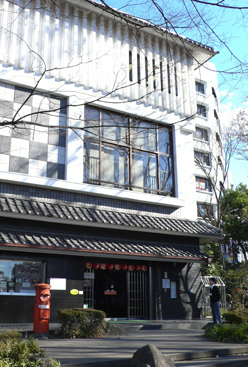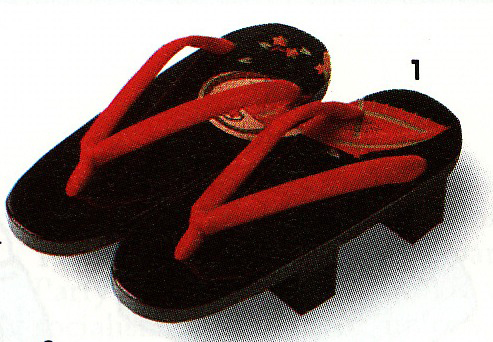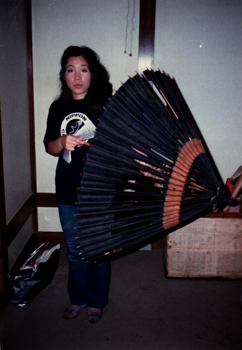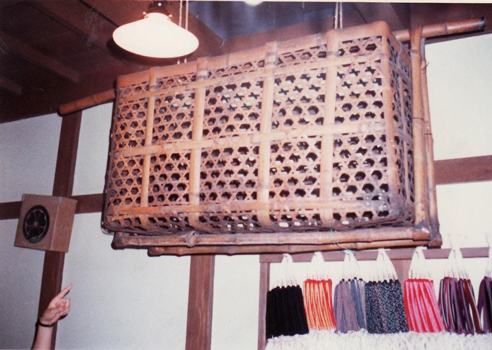[ LLL SIG Website ][ LLL SIG Publications ][ This Issue's Contents ]

Volume 6, Issue 2 [October, 2010]
An afternoon in Ueno Park (Part 11)
Tadashi Ishida
This is the eleventh in a series of articles in which Tadashi Ishida, an English teacher at a community center in Taito Ward in Tokyo, describes a language-learning activity that he conducted with his class. After considerable research and preparation, the learners toured Ueno Park with a foreign visitor, Mrs. Fitzwater, explaining to her the highlights of the park and answering her questions. After the tour, the learners wrote their own combination text and guidebook based on this experience.
We arrived at the Shitamachi Folk Life Museum. Ms. Arai explained the background of the museum.
Ms. Arai: This is the Shitamachi Folk Life Museum. It was built to hand down the history of the common people’s life from generation to generation. There have been a lot of merchants and artisans in this town, Shitamachi, since the Edo Era. There was a great earthquake in 1923, and in the Second World War, so many things of Japanese daily life were destroyed. That is why this museum was built.
Mrs. Fitzwater: Have you already been to this museum?
Ms. Arai: Yes, I have.
Mrs. Fitzwater: Do you think there has been a lot of change in Japanese life?
Ms. Arai: Yes, I think so.

私たちは下町風俗資料館に到着しました。新井さんがそれはどのように作られたか説明しました。
新:ここは下町風俗資料館です。市井の人々の生活の歴史を何世代にも渡って語り継がれるように建てられました。この下町には江戸時代以来たくさんの商人と職人が いました。1903年に関東大震災があり、そして、第二次世界大戦で、たくさんの日本人の日々の生活品が破壊されました。それがこの博物館が建てられた理由です。
フ:この博物館に来たことがありますか?
新:はい。
フ:日本人の生活に多くの変化があったと思いますか?
新:はい、そう思います。
We entered the Shitamachi Folk Life Museum. Mrs. Yoshida explained about the replica of a hanao store located in the museum.
Mrs. Yoshida: A hanao is a sandal thong. My father ran a hanao manufacturing store till I was six years old. There were many hanao and geta (outdoor footwear consisting of a thong attached to a wooden platform with two crosswise supports) makers about 60 years ago in Asakusa. But nowadays they have become shoemakers. So, when I come here, these things remind me of my good old days.
Mrs. Fitzwater: Why do you think this kind of shoe is not so popular any more? Why are more people today wearing sandals and regular shoes than this kind of thong sandal now?
Mrs. Yoshida: Because we don’t wear the kimono, we don’t wear the geta.
Mrs. Fitzwater: What are the purposes of these extended parts on the shoe? Why is it like that? Is it, or was it, a fashion or style to keep you up out of the water?
Mrs. Yoshida: It is not a fashion. It is to keep the kimono above the ground.

私たちは下町風俗資料館に入りました。吉田さんが鼻緒店について説明します。
吉:鼻緒はサンダルの紐のようなものです。私が6歳になるまで父が鼻緒の製造店を経営していました。約60年前は浅草にはたくさんの鼻緒と下駄の製造業者がいました。
しかし、今や彼らは靴の製造業者になりました。それで、私がここにきたとき、ここにあるもので古きよき時代を思い出しました。
フ:なぜこのような履物がもうはやらないと思いますか?なぜより多くの人々が、今日、このような鼻緒の履物よりもサンダルや普通の靴をはいているのですか?
吉:着物を着ないので下駄を履きません。
フ:この履物の出っ張った部分の目的は何ですか?なぜそのようになっているのですか?それはファッションですか、それとも水を防ぐためですか?
吉:それはファッションではありません。それは着物が地面につかないようにするためです。
Ms. Nihongi explained bangasa.
Ms. Nihongi: This is a numbered umbrella (bangasa).
Mrs. Fitzwater: Why is the umbrella numbered?
Ms. Nihongi: The master (store owner) lent the umbrella when customers came to the store on rainy days. So the master put the number on the umbrella.
Mrs. Fitzwater: Was it like a record to see who borrowed the umbrella to be sure and get the umbrella back? Was that the reason?
Ms. Nihongi: Yes, it was.
Mrs. Fitzwater: How do they waterproof those paper umbrellas?
Ms. Nihongi: The umbrella is made of oiled paper.

二本木さんは番傘について説明します。
二:これは番傘です
フ:なぜ、傘に番号がついているのですか
二:客が雨の日に店に来たとき、店の主人が傘を貸しました。それで店の主人が傘に番号をつけたのです。
フ:誰が傘を借りたか確認し、傘を返してもらうための記録のようなものでしたか? それが理由でしたか?
二:はい、そうです。
フ:この紙の傘はどのように防水するのですか?
二:傘は油紙で作られています。
Miss Nihongi also explained the yojin kago.
Ms. Nihongi: This is the yojin kago. It’s a(n emergency) basket for the necessary things of life in case a fire broke out.
Mrs. Fitzwater: Was the basket used to put your things in and throw it out the window? Is that what you mean?
Ms. Nihongi: Not exactly. There is a pole. They shoulder this pole and carry it out and run from the fire.

二本木さんが用心かごについて説明します。
二:これは用心かごです。火事が起きたとき、生活の必需品を入れるためのかごです。
フ:かごは物を入れて窓から投げ出すために使われるのですか?そういう意味ですか?
二:いいえ。棒があります。棒を担いで、かごを外に運び出し、家事から逃げるのです。
The tour to be continued in the next issue...